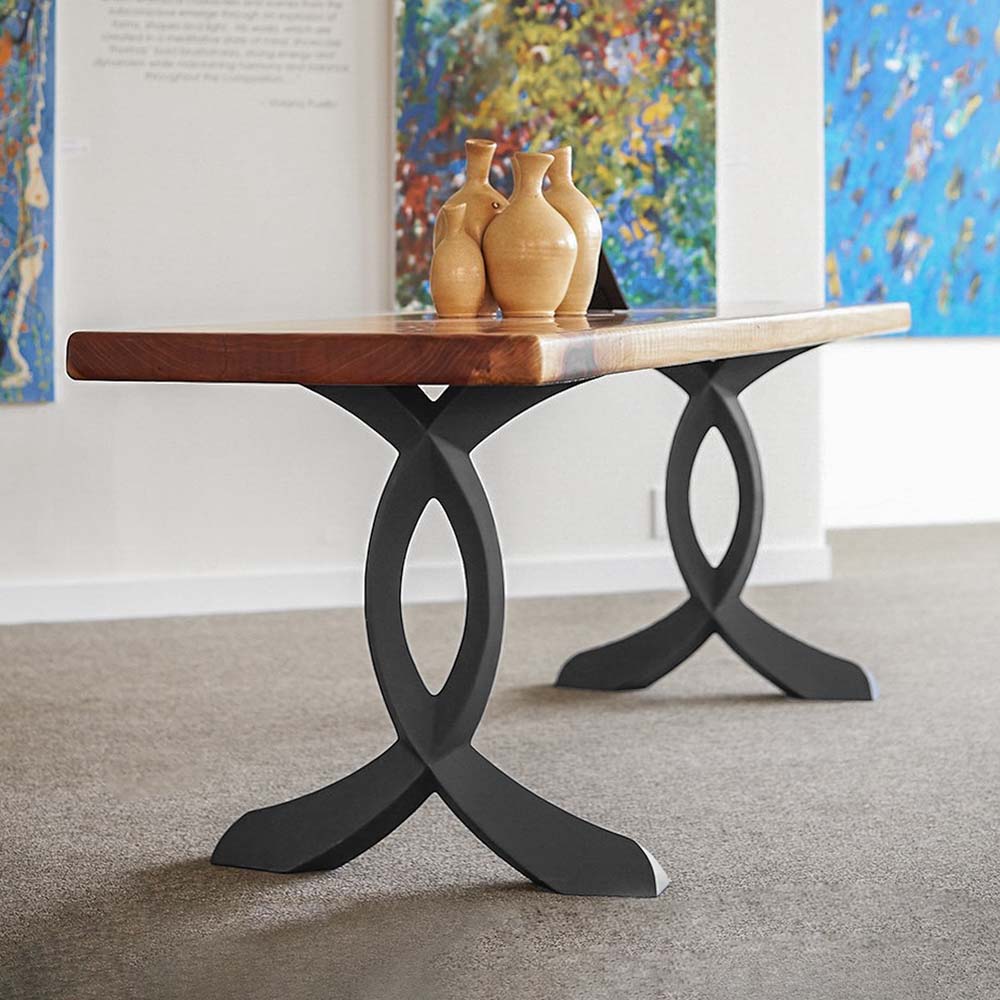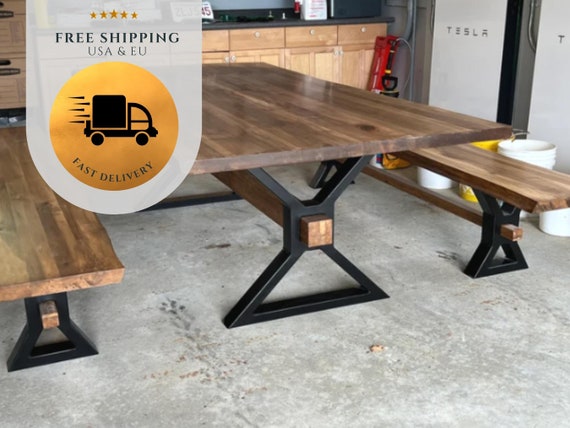Exploring Different Styles for Dining Room Table Legs to Suit Your Visual
Exploring Different Styles for Dining Room Table Legs to Suit Your Visual
Blog Article
Choosing the Perfect Table: What Styles Job Best for Your Home?
Selecting the optimal dining table for your home can be a nuanced process that stabilizes aesthetics and functionality. Whether your room leans in the direction of conventional style, modern minimalism, rustic beauty, or commercial trendy, the range of styles readily available can satisfy varied tastes. Each design supplies one-of-a-kind benefits and difficulties that can either boost or interrupt your dining location's harmony. Recognizing how various products, forms, and sizes communicate with your existing decoration is essential. To navigate these choices properly and find a table that truly enhances your home, take into consideration the complying with elements carefully.
Evaluating Your Space
Assessing the measurements and layout of your dining location is an essential initial step in picking the excellent table. Begin by measuring the length and size of the room, representing entrances, home windows, and various other architectural attributes that could affect table placement. This ensures that your table not only fits however additionally allows for comfortable movement around it.
Think about the variety of individuals you normally captivate. A table must suit your home's everyday demands while using sufficient versatility for occasional visitors. Generally of thumb, allocate at the very least 24 inches of table width each to make certain a comfortable dining experience.
It's likewise necessary to preserve appropriate clearance around the table. Preferably, there should be at the very least 36 inches in between the table side and wall surfaces or other furniture, making it possible for simple gain access to and movement. For rooms where chairs with arms or extra storage units like buffets are entailed, enhancing this clearance to 48 inches is advisable.
Illumination and environment play substantial functions as well. Guarantee that your eating table straightens with existing lighting components or prepare for ample lights services. This detailed spatial analysis guarantees that your table not only fits physically however likewise harmonizes with your room's general functionality and aesthetic.
Popular Table Styles

Standard dining tables typically feature ornate details, bent legs, and abundant wood coatings, evoking a feeling of timeless elegance. They are excellent for homes with timeless design or those looking to add a touch of refinement to their eating area.
Modern dining tables prioritize simplicity and tidy lines, commonly incorporating products like glass and steel. These tables are optimal for contemporary areas, supplying a sleek and minimalist look that complements minimal layout viewpoints.
Rustic dining tables, on the various other hand, emphasize all-natural materials and a handcrafted look - dining room table legs. They typically include reclaimed timber and a distressed coating, developing a warm and welcoming environment. These tables function well in farmhouse-style homes or those seeking a relaxing, organic feel
Industrial dining tables combine resources such as steel and wood, typically showcasing an utilitarian visual. This design is well-suited for loft spaces or urban areas, including a touch of sturdy charm and resilience to the dining experience.
Each design provides distinctive advantages, making it important to choose one that straightens with your home's total layout and your individual preferences.
Material Selections
When picking a table, the selection of material plays an essential function in determining both the table's aesthetic appeals and capability. Wood, steel, glass, and composite materials each deal special benefits and difficulties, making it necessary to align the product with your home's decor and lifestyle demands.
Timber is a classic and flexible alternative, readily available in varieties such as oak, walnut, and mahogany. Known for its toughness and heat, timber enhances both conventional and contemporary interiors. However, it needs normal upkeep to avoid scratches and warping.
Metal tables, usually crafted from stainless steel, light weight aluminum, or functioned iron, are commended for their modern allure and effectiveness. They are especially suited for commercial or minimalist settings yet can be susceptible to damages and may feel chilly to the touch.
Glass dining tables bring an air of style and openness, ideal for smaller sized spaces as they produce an impression of more go to this site space. While simple to tidy, glass can be prone to spots and requires mindful managing to avoid chips and cracks.
Composite products, such as MDF and plywood, offer cost-effective and personalized options, though they might do not have the durability of natural materials. Picking the best material guarantees your eating table is both a functional property and an aesthetic delight.
Sizes And Shape Factors To Consider
After figuring out the proper material for your table, the next factor to consider is selecting the appropriate sizes and shape to fit your room. The shape of the table significantly affects the area's visual and performance. Rectangular tables, the most usual form, are ideal for larger spaces and can suit a higher number of guests. They also permit an extra formal eating experience. Conversely, rounded tables cultivate a feeling of intimacy and are outstanding for smaller sized dining locations, urging discussion by removing corners and browse around here making every person feel just as included.
As a rule of thumb, designate at least 24 inches of table width per person to make certain comfy dining. In addition, think about the table's clearance room: there ought to be at the very least 36 inches in between the table edge and the wall surfaces or various other furniture. Prolonging tables offer versatility if you often organize larger events, giving additional seats when needed without occupying additional space daily.
Matching Your Decor
Picking a dining table that balances with your existing decoration is pivotal in creating a cohesive and inviting space. A sleek, minimal table with tidy lines is excellent for a contemporary home, while a vintage, elaborate table suits a much more conventional setting.
Color and material are equally substantial. If your decoration includes cozy tones and all-natural materials, consider a wood table to boost the natural feel. Alternatively, a glass or steel table might be more see ideal in a space dominated by amazing shades and commercial components. Take notice of the coating, as it needs to mirror various other furnishings and fixtures to maintain harmony.
Structure plays an essential function. A rough-hewn, recovered wood table can include character to a rustic area, while a refined marble surface can boost a glamorous dining area. Take into consideration the range and percentage of the table in relationship to the area size and existing furniture. A well-matched dining table not only boosts aesthetic charm but likewise enriches the general eating experience.

Final Thought
Choosing the excellent table necessitates cautious factor to consider of space, style, materials, shape, and dimension (dining room table legs). Typical tables complement traditional interiors with rich wood coatings, while contemporary tables suit modern setups with glass and metal. Rustic designs introduce warmth through all-natural products, and commercial styles boost metropolitan settings with raw components. Balancing the eating table with existing style ensures both capability and aesthetic charm, contributing to a natural and cosmetically pleasing eating location.
Report this page